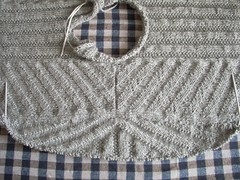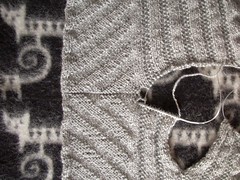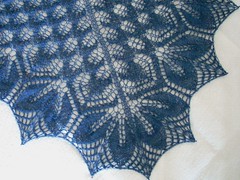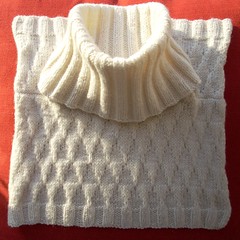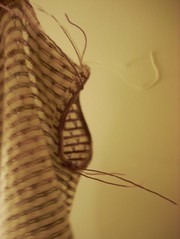This is what the first sleeve looks like so far. As I couldn't make up my mind whether to make diagonal or vertical stripes, I simply went for both.
First I knitted a few rows where the lines slanted in the opposite way from the centre; thus, they formed a point downwards, which I intended to turn into a vertical line.
However, that just looked messy, so I tried this way instead and like it a lot better. I should have taken a photo before ripping out those rows for comparison – well, you'll just have to believe me this is the better version!
A method I first tried a few years ago is shaping the top of knitted-on sleeves by using short rows. It results in a more fitted and comfortable sweater than a regular drop-shoulder sweater – and you don't have to sew the sleeve in place. First time I tried it I wasn't bold enough to shape it very much, but at least I could see it was possible to knit a sleeve that way. Second time it turned out a lot better.
Unfortunately, I'm not sure where I got the idea from. Others must have thought of it too, but I can't remember ever reading about this method. I think it simply came from a desire to shape sleeves better but not having to sew them in place. Necessity is the mother of invention.
This project devours yarn, so I'm going to knit the sleeves before deciding about the hood. Perhaps there won't be enough yarn for it, but then I actually might skip it anyway and make some kind of collar instead. I think hooded jackets look nice, but I never really liked wearing them.
But can a hoodless version be called "Monk"? Perhaps "De-hooded Monk" or "De-monked jacket"? Other suggestions?
